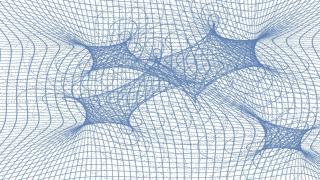Bibcode
Fian, C.; Mediavilla, E.; Jiménez-Vicente, J.; Muñoz, J. A.; Hanslmeier, A.
Bibliographical reference
The Astrophysical Journal, Volume 869, Issue 2, article id. 132, 8 pp. (2018).
Advertised on:
12
2018
Journal
Citations
18
Refereed citations
17
Description
We present a measurement of the accretion disk size of the quadruple
lensed quasar HE 0435–1223 from well-sampled 13-year COSMOGRAIL
optical light curves. Using accurate time delays for the images A, B, C,
and D, we modeled and removed the intrinsic quasar variability, and
found microlensing events of amplitude up to 0.6, 0.4, and 0.5 mag in
the images A, C, and D, respectively. From the statistics of
microlensing magnifications in these images we use Bayesian methods to
estimate the size of the quasar accretion disk. We have inferred the
half-light radius for the accretion disk using two different methods,
{R}1/2={7.6}-1.1+12.0\sqrt{M/0.3
{M}ȯ } lt-days (histogram product) and
{R}1/2={7.7}-1.2+7.0\sqrt{M/0.3
{M}ȯ } lt-days (χ 2 criterion). The
results are self-consistent and in good agreement with the continuum
size predicted by single-epoch spectroscopy and previous studies making
use of narrowband photometry of HE 0435–1223.
Related projects

Relativistic and Theoretical Astrophysics
Introduction Gravitational lenses are a powerful tool for Astrophysics and Cosmology. The goals of this project are: i) to obtain a robust determination of the Hubble constant from the time delay measured between the images of a lensed quasar; ii) to study the individual and statistical properties of dark matter condensations in lens galaxies from
Evencio
Mediavilla Gradolph